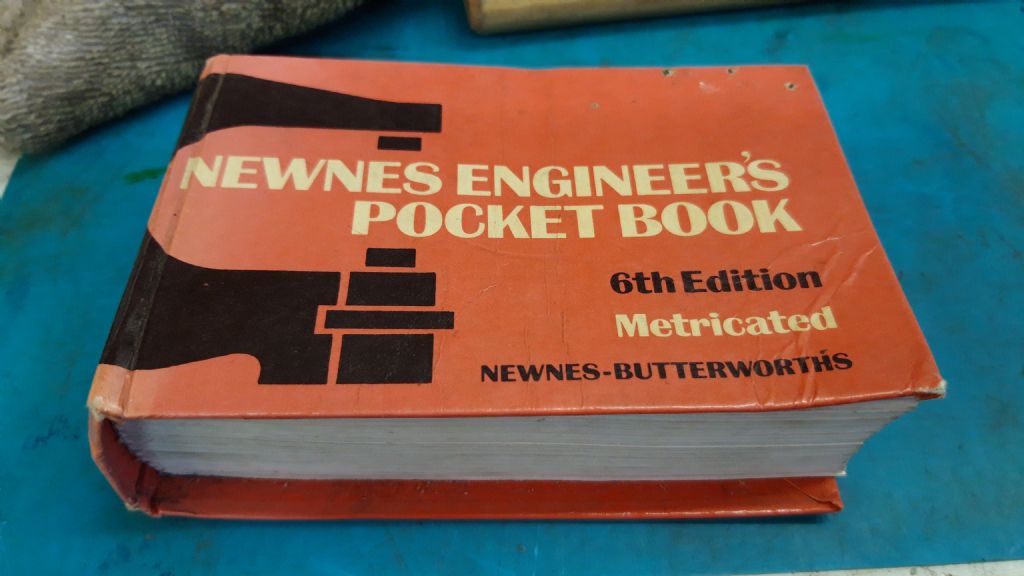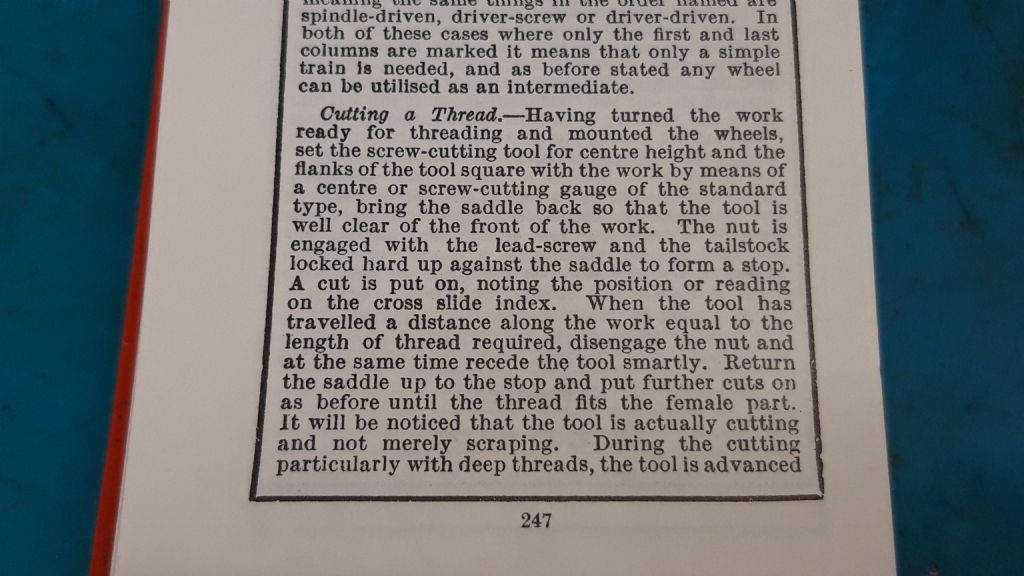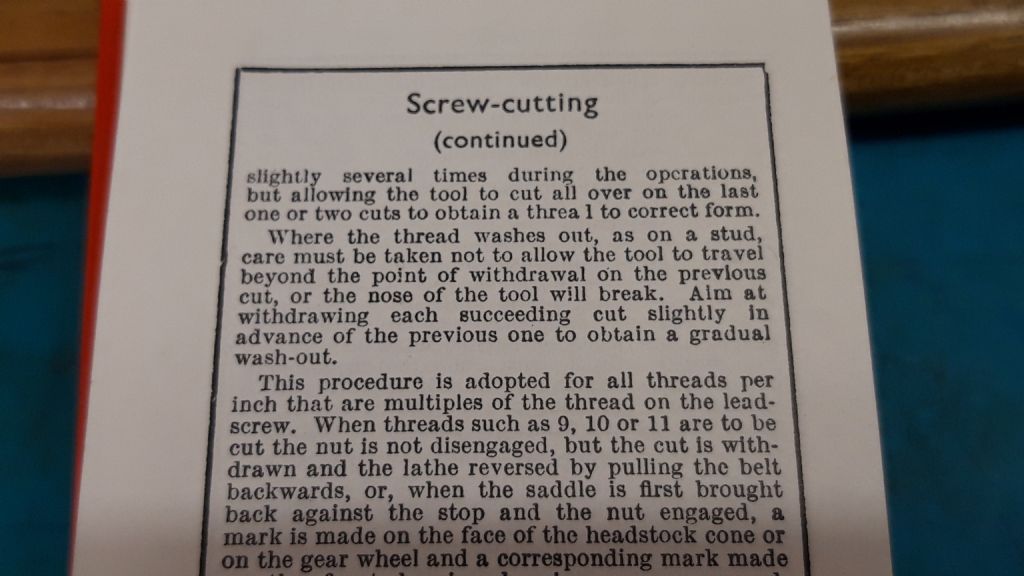I was taught the same/similar way as an apprentice in the toolroom. But advancing the topslide by half the amount the cross slide was moved in rather than a third.
There are several advantages to this method, over "the Yankee method" of swivelling the topslide at an angle.
One is that you set your topslide to turn dead parallel and leave it there, so it can reliably be used for turning short lengths up to shoulders etc. thus saving time on small and/or fiddly jobs.
The other is the you can manipulate the top slide at the end of the screwcutting process to take a cut down one flank of the thread at a time to clean it up, or to create a little extra clearance if needed, without exceeding the correct thread thread depth. This becomes more critical on larger threads where you are most likely fitting the male thread to an existing female thread, nut, etc.
However, the "Yankee method" of swivelling the topslide does have the advantage of keeping the topslide clear of the tailstock, more of an issue on smaller lathes such as the Myford etc. The larger lathes eg DSG etc don't seem to have this problem so much because the larger toolbits they use have more overhang and better designed layout of topslide.
ISTR there is a standard number that you mulitply the thread pitch by to arrive at correct thread depth when using the topslide swivelled to 29 degrees a la "Yankee method". So it's no more complicated than the non-swivel method. Just set the cross slide to zero and use that to retract tool at the end of cut and then reset it to zero and then add the cut depth with the topslide. I have that number written in my old thread chart book but dont remember offhand what it is.
I use both methods, depending on what I am doing, which lathe I am on, the way the wind is blowing etc. Both seem to work ok. But I do prefer the non-swivel option, providing tailstock clearance is not an issue (which it can be on the Myford etc at home.)
Re "YouTuber's method" there seems to be a great variety in quality of information on machining on YouTube. Much of it is good. But much of it is any old self-taught beginner posting up their new-found expertise. (Not saying that is the case in this particular instance, note.) The Dunning-Kruger effect can run rampant. To wit: one example on servicing a lathe chuck shows the two halves being separated by belting the chuck key with a shifting spanner! All the while ignoring the three threaded jacking screw holes especially provided for this purpose.
Much more reliable to spend the little bit of money it takes to get a couple of the classic books on using the lathe by past masters such as LH Sparey (my personal favourite), Martin Cleeve, Duplex, Ian Bradley, GH Thomas etc. Many of these were guys who had many years of day-in day-out professional machining experience behind them.
Edited By Hopper on 16/09/2019 05:31:14
Ian Johnson 1.


 . Take a cut. And repeat until nearly down to depth. The final couple of cuts are taken without moving the top slide, this will give a good finish on both flanks of the thread. This will ensure that the cutting edge of the tool is always advancing and cutting, with minimum rubbing on the trailing edge.
. Take a cut. And repeat until nearly down to depth. The final couple of cuts are taken without moving the top slide, this will give a good finish on both flanks of the thread. This will ensure that the cutting edge of the tool is always advancing and cutting, with minimum rubbing on the trailing edge.




